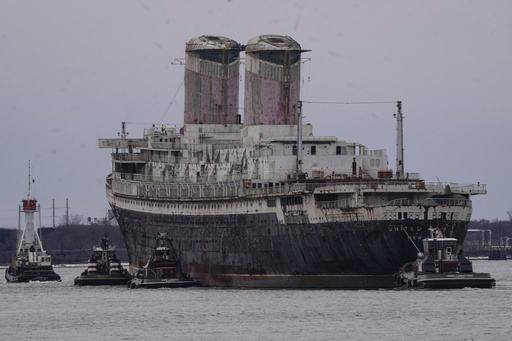A historic ocean liner, the SS United States, began its final journey on Wednesday, leaving the Delaware River waterfront in south Philadelphia. The aging vessel is set to be transformed into the world’s largest artificial reef, with plans to sink it off Florida’s Gulf Coast after undergoing preparations in Mobile, Alabama. This significant move was prompted by the resolution of a long-standing rental dispute between the conservancy managing the ship and its landlord. The initial plans to tow the ship last November were postponed due to concerns from the U.S. Coast Guard about the vessel’s stability.
Officials in Okaloosa County, located in Florida’s Panhandle region, are optimistic that the SS United States will become a prominent feature among the area’s over 500 artificial reefs. They envision it as a major diving attraction with the potential to boost local tourism, bringing in substantial revenue for scuba shops, charter fishing companies, and hotels in the region.
The deal to acquire the ship is expected to exceed $10 million, and the entire process—cleaning, transporting, and ultimately sinking the vessel—will likely take at least 18 months. The SS United States has a rich history, having made its maiden voyage in 1952, during which it set both eastbound and westbound transatlantic speed records, averaging an impressive 36 knots, equivalent to over 41 mph (66 kph). It crossed the Atlantic in just three days and a little over 10 hours, eclipsing the previous record held by the RMS Queen Mary by ten hours. Remarkably, it still holds the record for the fastest transatlantic crossing for an ocean liner.
Susan Gibbs, who is the president of the SS United States Conservancy and the granddaughter of the ship’s designer, expressed that this vessel will forever represent American strength, innovation, and resilience. She conveyed well-wishes for the ship’s journey, hoping for fair winds and smooth sailing to its new resting place.
After being designated as a reserve ship in 1969, the SS United States changed hands multiple times with various private owners attempting to redevelop it. However, the high costs and timing of these attempts proved challenging, leading to the ship’s extended stay along the Philadelphia waterfront for many years.




